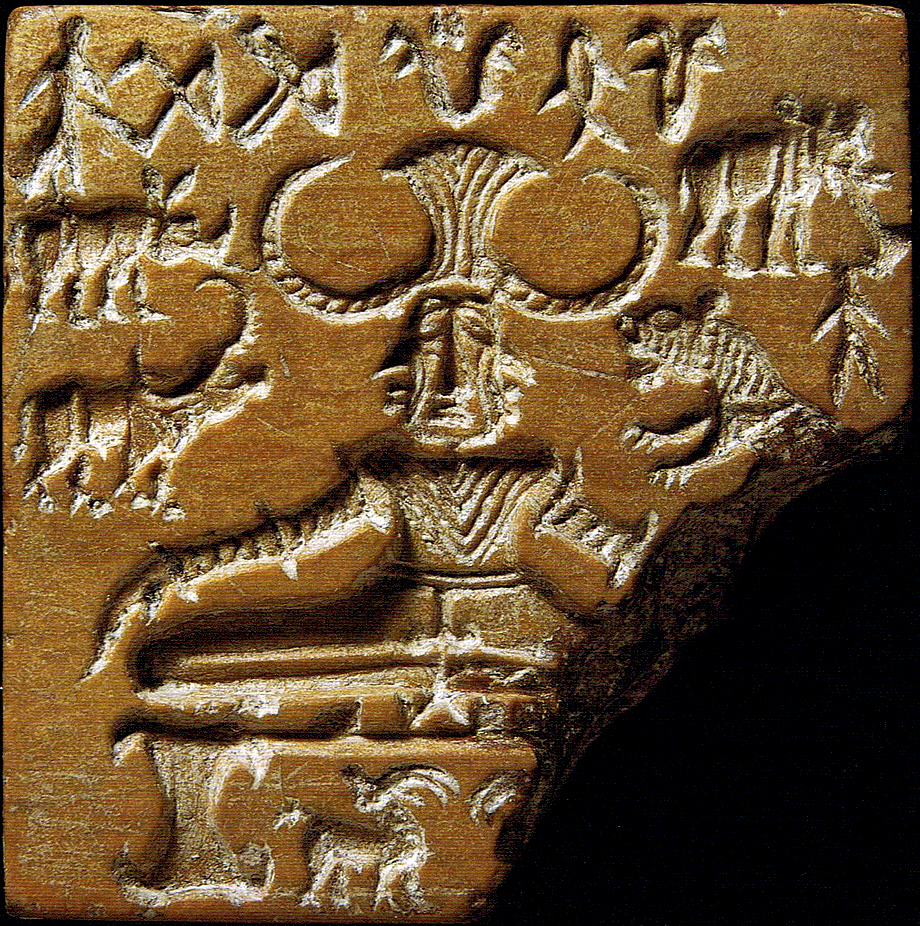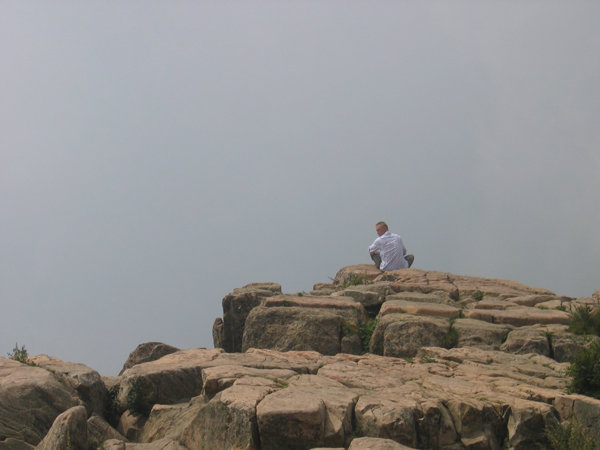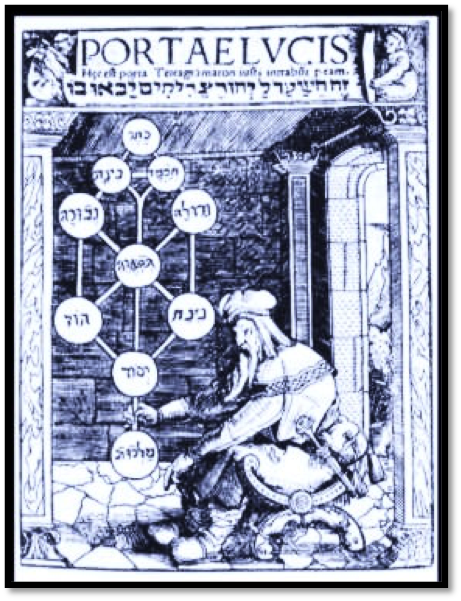
The Origins of Kabbalah
Kabbalah is a body of esoteric teachings originating in Jewish scripture and mystical tradition. With literature probably dating from the second century Middle East, the Kabbalah as it is known today found its origin in medieval Judaism. It remains an important part of Hasidic Judaism. Christian Kabbalah developed in Europe during the Middle Ages and thrives today in Masonic and esoteric communities.
Kabbalah, in Hebrew, קַבָּלָה, literally means “tradition” and remains an important part of Hasidic Judaism. It is the cherished Jewish mystical discipline that teaches the communion of an infinite God, Ein Sof (אֵין סוֹף) with its finite creation, the universe, through the mortal man. The system was first transmitted orally in medieval times using symbols and ciphers.
Jewish Kabbalah was adapted by medieval Europeans to accord with Christian, Neoplatonic and Hermetic worldviews. It thus became an integral part of the Western Mystery Tradition.
The Western Mystery Tradition
Neoplatonism, Hermeticism, and Kabbalah
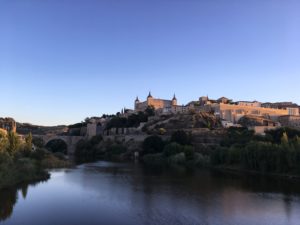
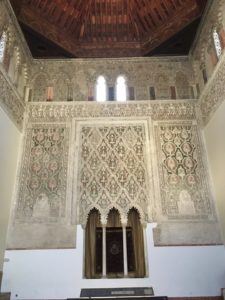
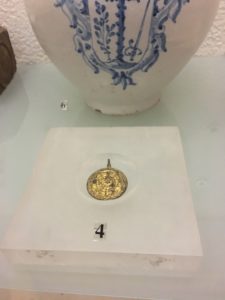
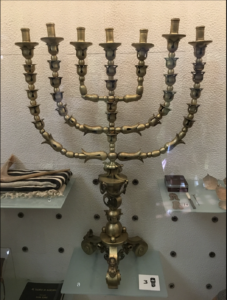
The city of Toledo is over 2000 years old and is recognized as a World Heritage Site. Toledo is known as the “City of Three Cultures” for its historical peaceful cosmopolitan co-existence of Judaism, Christianity and Islam. The Toledano tradition of Kabbalah originated with the Sephardic Jews of Toledo, whose history is kept at the Museo Sefardi.
According to legend the Kabbalah was given by God to Adam, and was known by Abraham, Moses, and Solomon. Actually, the mystical tradition had its roots with the Jews who relocated to Alexandria, Egypt after the destruction of the Second Temple of Jerusalem around 70 CE. Esoteric Judaism developed with Hellenist, syncretistic or magical, and perhaps Persian influence during this first century of the Common Era.
The tradition took shape in the second century Sepher Yetzirah, the “Book of Creation.” Kabbalah crystallized into a mystical system in the twelfth century in Southern France and Spain. The first work of classic Kabbalah is the Book Bahir, the “Book of Brightness,” argued to have been written by Isaac the Blind (1160-1235), the “father of Kabbalah.”
Kabbalah became popularized with the rabbinical literature of the Zohar, the “Book of Splendor,” written in thirteenth century Spain by Moses de Leon. Kabbalah’s influence on Jewish thought reached its height with the Zoharic teachings of the mystic Isaac Luria Arizal (1534-1572) of Galilee.
The early Kabbalists were open to the philosophical and spiritual culture in Europe. Gershom Scholem, a leading historian of the Kabbalah, holds that the tradition may be described as the “product of the interpenetration of Jewish Gnosticism and neoplatonism.”
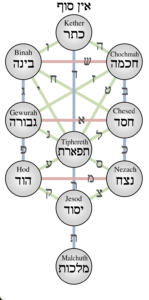
Kabbalah Cosmogony
The Kabbalah describes the Creation and the cosmic anatomy to design a context within which the relation between man and God might be mapped. The story of Creation began with Ain Soph, nothingness or vacuum, and zimzum, a contraction within Ain Soph that created the ten Sephirot (or Sephiroth).
The ten Sephirot, or Crowns, are the attributes of God derived from I Chronicles 29:11:
“Yours, O Lord (Yaweh), are the Mercy (Greatness), the Strength (Power), the Beauty (Glory), the Victory, and the Splendor (Majesty); all that is in heaven and upon the earth is yours; Yours, O Lord (Yaweh), is the Kingdom.”
The Sephirot, collectively called the Tree of Life, are landmarks to guide man in his Mystical Ascent. The Kabbalist acts to unify the Sephirot through prayer and meditation on the diagram of the universe known as the Tree of Life.
The Sephirot took form in the Adam Kadmon, or primeval man, from whose forehead extended lights that aligned in complex patterns which are expressed by names. Each manifestation is, therefore, an expression of its name, and its name a special arrangement of the Hebrew letters.
The force of Creation damaged the seven lower Sephirot and from the separated pieces of the broken Sephirot grew the Kelipot, the husks or shells, which are the evil of Creation. Each of three planes had been displaced to the proper place of the plane below it, thus forming four planes.
The Kabbalists call the totality of the Sephirot the Tree of Life, for in it is contained all that is divine and eternal. Each Sephirah has its own unique power or function but is said to contain all the other Sephirot in miniature.
The lowest Sephirot exists on its own plane, the material, which has no active force in itself, but comprises the totality of the Sephirot. The story of Creation takes another bad turn when the primordial man Adam sins, mixing himself with the Kelipot, which exist only on the lowest plane. His sin separated what should have been united, by an act of disobedience, and all sin is a repetition of this error, except sorcery, which unites what ought to be separate, that is, divine power and base objects.
The three highest Sephirot, which had not been damaged, began naturally to guide the broken Sephirot back to wholeness or perfection with an influx of spiritual light. This is the process of Tikkun, which means restoration or return, and is the object of humankind, for it will achieve an everlasting communion between all creatures and God.
Humankind has a special mission because he alone exists in the physical plane, where God and angels are on the higher planes. It is only in the physical, where good meets evil, that good might overcome evil. Thus the sages act to unify the Sephirot through prayer and meditation on the Tree of Life.
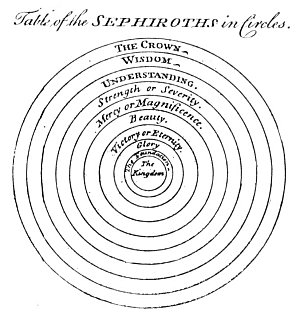
Kabbalistic Cosmology
The Kabbalah teaches the diagram of the Tree of Life as a map of Creation. From the Ein Soph, the Boundless, emerge the spheres or emanations known as the ten sephirot. The three top sephirot represent the three aspects of the mind of God: the Crown, Wisdom, and Understanding. The lower seven sephirot are the whole of Creation.
The Sephirot are seen to hang upon three pillars; the Pillar of Mercy, the Pillar of Strength or Judgment, and the Middle Pillar, the Pillar of Balance. There is balance, as well, between the lowest sephirah, Malkuth or the Kingdom – the physical shell of the cosmos – and the highest Sephirah, Kether, the Godhead or creative force of the cosmos. In the center between the material world and its Creator isTipheret, “Beauty,” the cosmic person.
Like Neoplatonism, the design of the Kabbalistic method follows the mystical ascent, with God as the Emanator of the four stages or planes of Creation. Jewish mystics identified these four levels as Emanation, Creation, Formation, and Manifestation. Man is born in the lowest plane, the physical, and is to reverse his sinful nature to return up the vertically aligned worlds to the Godhead.
The mystical ascent is described by the process of Tikkun, which means restoration or return, the quest for the everlasting communion between all creatures and God. This cosmology is simply a technical description of the fall of Man from the Grace of God, and the method of acting toward the restoration of that Grace. The Kabbalah thus describes the Creation and the cosmic anatomy to map the relation between man and God; and the path from the base to the Source.
The Four Planes on the Tree of Life
According to traditional Kabbalah, the whole universe is best defined by four planes, similar to the scientific explanation of sound.
The first plane is beyond existence, like silence, the absence of sound. This is the Divine Plane.
The second plane is the Plane of Creation, like phonation, the creation of a sound.
The third plane is the Plane of Formation, like resonance, the harmonic ordering of a sound into a note as opposed to unformed “noise.”
The fourth plane is the Plane of Manifestation, like the articulation of a sound into a word or words. As the singer of a song listens to herself for aural feedback to master her art, so the universe observes itself through living beings – observers – for feedback to master the art of life.
The four worlds, corresponding with the four letters of the divine name of God YHVH:
1. Azilut, Olam ha-azilut, the world of emanation (the Sephirot and the thirty-two Paths of Wisdom)
2. Beriah, Olam ha-beriah, the world of creation (the Throne & Chariot)
3. Yetzirah, Olam ha-yezirah, the world of formation (the Angels)
4. Assiyah, Olam ha-asiyyah, the world of manifestation (the Terrestrial Sphere)
י
Godhead; Original Tree
(Emanation: the One)
“Father”
ה
Archangels and Angels
(Creation: the Good)
“Holy Spirit”
ד
Humanity
(Formation: the Law)
“Son”
ה
Physical World
(Manifestation: the Cosmos)
“Kingdom”
I. Pillar of Justice/Judgement/Severity II. Pillar of Mercy
III. Middle Pillar: Equilibrium
Gematria
Gematria is the assigning of numerical value to each letter of the alphabet and thus to words. The belief is that the number of a word reveals some esoteric quality in the word or the thing the word represents. Gematria was used in Mesopotamia in several forms before the eighth century BCE and in Greece by Pythagoreans by the sixth century BCE in the form used later by the Hebrew mystics (1-9, 10-100,100-900).
By the first century BCE the Jewish people were using Gematria as it is known today, as in the chart below:
1-A; 2-B; 3-G; 4-D; 5-H; 6-V; 7-Z; 8-Ch; 9-T;
10-I; 20-K; 30-L; 40-M; 50-N; 60-S; 70-O; 80-P; 90-Tz;
100-Q; 200-R; 300-Sh; 400-Th; 500-K final;
600-M final; 700-N final; 800- P final; 900-Tz final
The three “Mother Letters,” Shin, Alef, and Mem, were said to correspond with three elements, fire, air, and water, respectively. Mem was the “hand of merit,” Shin the “hand of liability (or sin),” and Aleph the “tongue of decree” which was the balance that weighed them.
Aleph was in the head of man, Shin on his lips, and Mem in his heart, as representative of heart, head, and word.
The sacred nature of the twenty-two Hebrew letters was acknowledged by the Midrashic authors and in Talmudic times rabbis saw mystical meanings in the shapes of the letters.
Every word and phrase of the Hebrew language was subject to mystical interpretation through Gematria, the practice of assigning spiritual meaning to numbers, and numbers to the letters of the alphabet, then interpreting the spiritual meaning of a word by the numerical value of its letters.
As an example, the Revelation of the Christian Saint John, written in the first century of the Christian Era, contains Kabbalistic symbolism; most notable is the “number of the Beast,” 666.
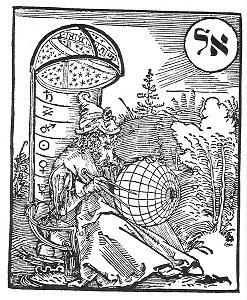
Kabbalah and Science
As a cultural Episcopalian and secular Zen Buddhist, the author maintains that the Western Mystery Tradition, including Kabbalah, remains an integral part of his worldview. However, a skeptic with a scientific mind cannot simply concur with every assertion of any belief system, including faith-based mystical systems. Questions to ask in regards Kabbalah include:
- What are the correspondences between the Kabbalistic cosmology and the scientific world-view?
- What does the Kabbalah offer that can benefit humanity in general?
- Where does science disprove Kabbalistic claims?
- Finally, what does a scientific Kabbalah assert to be the factual Creation Story and the traditional meaning and process of Tikkun olam, the “restoration of the world?”
On the positive side, the Tree of Life diagram may offer an effective basis for a peg system of mnemonics, the art and science of memory. The philosopher Aleister Crowley (1875-1947) created an extensive table of correspondences based on the Tree of Life published in his book 777.
The English Kabbalah teacher Z’ev ben Shimon Halevi (1933-2020) recognizes that Kabbalah is re-emerging not as ancient dogma but as modern science and contemporary psychology. He sees a universal teaching in the mystical ascent of neoplatonism, shared by Kabbalah, Native American teachings and Eastern philosophies. As the motto of the Theosophical Society declares: “There is no religion higher than Truth.”
In this sense the Toledano tradition of Kabbalah is in complete alignment with science-based meditation. We should never be attached to any philosophy or doctrine. While we maintain our ancient traditions, we are always learning, ever changing our world-view to accord with new information derived from science and critical thinking. This is the only way we can overcome our misconceptions and cultivate our wisdom.

The Ten Sephirot in Meditation
Each Sephirah is an aspect of the Eternal as well as of the human being. Embodying the qualities of the whole of eternity, every human being is thus the epitome of the cosmos, a microcosm to the greater macrocosm.The Sephirot are visualized as spheres of light.
There are two ways to begin meditation. In the first method, awareness focuses on the first and highest Sephirah, Kether, or Crown, and descends down the Sephirot upon the Tree of Life, one at a time, to Malkut, Kingdom. In the second method, awareness begins on the lowest Sephirah, Malkut, the material world, and rises up the ten celestial spheres to the top of the Tree of Life to Kether, the Godhead.
These two methods of meditation can be practiced together as a full cycle of visualization of the process of Creation from Godhead down to the base material world, and back up through the attributes of the Divine to the Source, which in the Judeo-Christian tradition is given the title, ‘Lord.’ Colors, parts of human anatomy, and other correspondences may be visualized in meditation.
01. Kether/Keter, “Crown,” is the Will of God, the Ultimate Cause that exists before any word or action. It is also known as the Ayin, or infinite “Void,” out of which all of Creation emanates.
2. Chokhmah/Hokhmah, “Wisdom,” is the primordial Torah, or Book of the Law, the divine wisdom of the Creator, the original impetus to create Creation. It is intuition and inspiration. Wisdom is insight beyond all knowledge and thought. To pass through to the Divine, one must transcend perceptions, feelings and thoughts.
3. Binah, “Understanding,” the maternal Divine Intelligence through which Creation was born. Binah is the mother of the lower seven Sephirot; the partner and balance of the paternal Hokhmah.
4. Chesed/Hesed, “Mercy” or “Lovingkindess,” is Divine Love, generosity and compassion. It is the Grace of God and unconditional love.
5. Gevurah, “Strength,” is related to Din, Judgement. Gevurah, as Justice, is the power that balances the mercy of Hesed.
6. Tiphereth/Tiferet, “Beauty,” is the center of the Tree of Life, the ultimate balancing force of the Cosmos. In Jewish Kabbalah, the Word takes form as the written Tanakh. In Christian Kabbalah, Tiphereth is the Christ, the Word made flesh: the perfect man between Heaven and Earth. Tiphareth is also related to imagination and complete realization.
7. Netzach/Netzah, “Victory,” is the benevolence and supremacy of the Lord God throughout Creation. Netzach is the source of unconscious desire and emotion.
8. Hod, “Splendor,” is the counterpart and balance to Netzach. This pair of Sephirot are considered to be like a pair of feet. Hod is associated with thoughts and prayers.
9. Yesod, “Foundation,” sits on the Middle Pillar above Malkut, the feminine material world, and below Tiphareth, the masculine perfect human, and Kether, the Godhead. It is related to the sensual world and organs of reproduction.
10. Malkut/Malkhut/Malkuth, “Kingdom” or “Sovereignty,” is the Shekhinah, the feminine Divine Presence in the world. It is associated with the material world, itself, in all its good, evil, and neutral aspects, but especially as the real world of struggle and suffering, where humankind has fallen from the heavenly paradise of the Garden of Eden.
The spiritual quest of humanity is to return to paradise through healing the world. This is known as Tikkun Olam, the “healing of the world.” Healing begins right at home with meditation.
Kabbalah Society in the Toledano Tradition:
A KABBALISTIC VIEW OF THE CHAKRAS
At the turn of the millennium, Kabbalah was an essential esoteric practice for a number of prominent Freemasons in London, Washington, D.C., and elsewhere. A Western Mystery Tradition Masonic lodge practice includes visualization and contemplation of the Kabbalistic cosmology and the Mystical Ascent. Along with study and Masonic ritual, there is about one minute of silent Illumination meditation during lodge meetings.
Guided visualization is a common form of Kabbalistic meditation upon the Tree of Life. A few representative visualizations led by Rabbi Z’ev ben Shimon Halevi of the Kabbalah Society are shared below.
Soundcloud: Guided Meditations by Z’ev ben Shimon Halevi of the Kabbalah Society (authentic Toledano Tradition)
Gardens of Life
Ladder of Creation
The Four Worlds
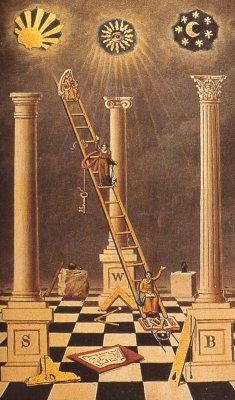
Kabbalah in Freemasonry
After the Turks took the Byzantine Empire in 1453, Greek Orthodox Christian refugees fled to Italy, forcing the Greeks and Italians to learn to coexist together as a larger community. With the Greeks came manuscripts of Plato, Aristotle and the Christian Gospels. Italian humanists began to study Neoplatonism and Hermeticism and were able to find cultural common ground in some basic shared ideas.
The Hermetic-Kabbalistic tradition may be defined as the juxtaposition of Alexandrian Neoplatonism and Hebrew mysticism. The cosmopolitan environment cultivated by the Arabic golden age helped produce medieval Hermeticism and Kabbalah. These mystical traditions would be spread throughout Europe when the Jews were forcibly expelled from Roman Catholic Spain in 1492.
By the early seventeenth century the medieval Hermetic-Kabbalistic tradition had become an ever-evolving global cosmopolitan institution with the early Freemasons. In Britain Sir Robert Moray and Elias Ashmole were involved with the Hermetic-Kabbalistic tradition in Northern England and were both made Freemasons in the 1640s. The renowned Freemason William Preston’s (1742-1818) Lectures include the teachings of the Kabbalah.
In 1813 the United Grand Lodge of England was created out of the Premier Grand Lodge, with HRH the Duke of Sussex as Grand Master, and the Antient Grand Lodge, with HRH the Duke of Kent (his brother) as Grand Master. The Duke of Sussex became the first Grand Master of the new Grand Lodge. In his library were a number of essential Kabbalistic books.
Eliphas Levi (1810-1875), the famed magician and Freemason, wrote Elements of the Kabbalah; Mackey’s Encyclopedia of Freemasonry and Albert Pike admired the Kabbalah in his Morals and Dogma (1871). Arthur Edward Waite (1857-1942), Freemason, member of the Hermetic Order of the Golden Dawn, and prolific writer on esoteric subjects, including Kabbalah.
The famous Masonic author Joseph Fort Newton (1880-1950) associated Kabbalah with the Craft. My own Masonic mentor William Kirk MacNulty (1932-2020), who was named Friar No. 94 in the Society of Blue Friars in 2005 for his contributions to Masonic literature, was an enthusiastic and sincere teacher of Kabbalah as well as Freemasonry. The Light of this gentlemen’s tradition burns strong even today.
For more on Freemasonry and Kabbalah:
The Masonic Sourcebook
Kirk MacNulty
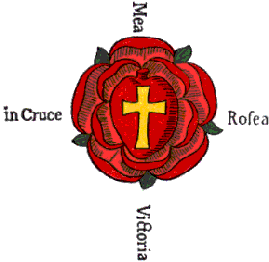
The Medieval Hermetic-Kabbalistic Tradition and Rosicrucianism
About the Author
I studied Kabbalah in my early teen years but my formal study of Kabbalah began when I was a Freemason in Washington, D.C. and Alexandria, Virginia. In 2004 I became a regular Master Mason of the Fraternity of Free and Accepted Freemasons in the District of Columbia. I received my thirty-second degree with the Alexandria Scottish Rite in 2009, proudly serving as candidate for the final degree. My wife and I were initiated into the Order of the Eastern Star in the District of Columbia.
I lived in Alexandria for a number of years as the Librarian and Curator at the George Washington Masonic Memorial. As librarian of the Washington Library at the Memorial, I managed several collections of books and periodicals, including the Lemert collection. R. J. Lemert, of Montana, was called the “Albert Pike of the Midwest” because of the extent of his esoteric knowledge. I also managed the complete existing Masonic records of all American Freemasons, past and present.
The library held Benjamin Franklin’s “Constitutions of the Free-Masons,” the first Masonic Book printed in America. This manuscript was a reprint of Anderson’s Constitutions of 1723, done in Philadelphia in 1734 specifically for Americans.
I led group tours through the Memorial, speaking on the history and issues of American and global Freemasonry. I was published in a few state, national, and international publications, was interviewed by the local press in Old Town Alexandria (the historic Alexandria Gazette), and I advised and even made an appearance as a Knight Templar in the nationally televised 2006 History Channel documentary “Mysteries of the Freemasons” by Powderhouse Productions.
For the benefit of the Washington Library on the sixth floor of the Memorial I was allowed a world class mentor, a European information and library science teacher and expert in Masonic libraries. It was my honor to study under this librarian at the House of the Temple library, the collection founded by the father of Scottish Rite Freemasonry, Albert Pike, in 1891, and claimed to be the first library open to the public in Washington, D. C.
The Memorial is the only physical national institution of Craft Freemasonry in the United States. At the annual Masonic Week conference there is a gathering at the Memorial of all the Grand Masters of the United States and their entourages, as well as some foreign Grand Officers.
My ‘Mother Lodge,’ the Lodge of the Nine Muses in the District of Columbia, was created in the early 1990s as a Mystery School by Past Masters of the Alexandria-Washington Lodge. That distinguished lodge was located for the last fifty years at the Memorial. It was named for its founding Master, George Washington, after his decease.
When the Alexandria Town Hall suffered a great loss of George Washington personal items and memorabilia during a fire in the 1870s, the Alexandria-Washington Lodge and its museum relocated to the Memorial.
The Lodge of the Nine Muses was named for the famous lodge in Paris, La Loge des Neuf Sœurs, which promoted the Enlightenment and claimed such members as Benjamin Franklin, Jean-Antoine Houdon, and François-Marie Arouet, best known as Voltaire. The original lodge supported the French Academy of Sciences and the American Revolution.
The new lodge aligns with those values and teaches the Western Mystery Tradition, holding a reverence especially for Manly P. Hall, William L. Wilmshurst, and W. Kirk MacNulty, a prominent Freemason amongst prominent Freemasons, and my Masonic mentor.
The Lodge of the Nine Muses (or Sisters) is one of several Masonic lodges around the world that help preserve and pass on the authentic teachings of the Western Mystery Tradition.
My Masonic mentor, W. Kirk MacNulty, authored the respected guide to esoteric Freemasonry,The Way of the Craftsman, Freemasonry: Symbols, Secrets, Significance, and Freemasonry: A Journey Through Ritual and Symbol. MacNulty’s essay on Kabbalah and Freemasonry can be found HERE.
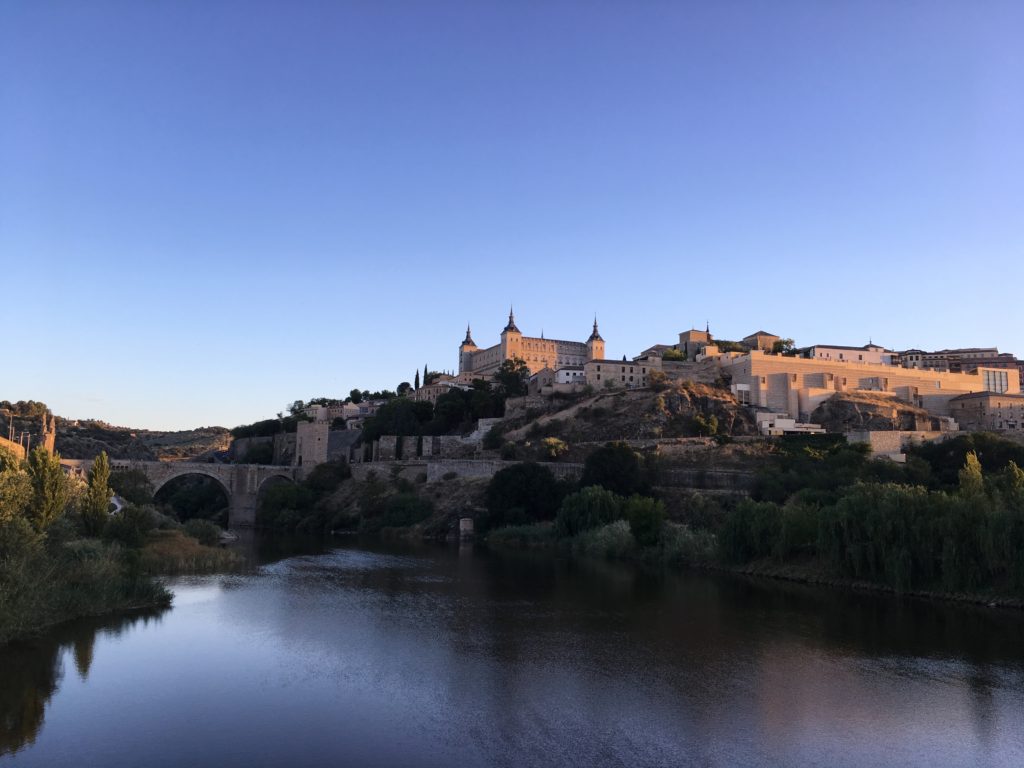
MacNulty had served as Master of the Lodge of Living Stones, the lodge founded by Wilmshurst in Leeds, England. Later in life MacNulty subsequently founded the Lodge of the Nine Muses in Washington, D.C. along with other Past Masters of Alexandria-Washington Lodge No. 22.
At one point in my two year apprenticeship I met my mentor in London and we went to Freemason’s Hall on Great Queen Street, the headquarters of the United Grand Lodge of England, the premier grand lodge of Freemasonry. Masonic meetings have been held on the site since 1775, the current building being opened in 1933. The most ancient lodges in London still meet in the temple, including three of the four lodges that met before the Grand Lodge was formed in 1717.
I had the distinct honor of visiting the lodge at Leeds with Brother MacNulty and meeting up with his friend there who would become the first African American Grandmaster of the District of Columbia. It was during this trip that MacNulty introduced me to the staff at Freemasons’ Hall on Great Queen Street, the headquarters of the United Grand Lodge of England, as well as to several outstanding lodges in London.
For a couple of years we met periodically for lessons, often at the Shriners’ Almas Temple in the heart of downtown Washington D.C., a unique example of Islamic-style architecture. A large focus of these teachings was the Kabbalah as it has been passed down in the Toledano tradition as communicated by Z’ev ben Shimon Halevi (English name, Warren Kenton). My views in no manner reflect on the teachings of these gentlemen; but I certainly would like to think I learned something important from my Masonic mentor.
When my mentor was satisfied with my proficiency in the Craft, I was examined before our lodge and the Grandmaster of the District of Columbia with his entourage of Grand Lodge officers. After I had passed the requisite trials in the midst of this assembly I offered a presentation on aspects of the history, philosophy, and practice of esoteric Freemasonry.
After this successful talk, I was tasked with a new paper on the Western Mystery Tradition, a challenge I completed even after I had left the fraternity to live in Indonesia, a country where Freemasonry is banned.
My mentor’s Kabbalah teacher, Z’ev ben Shimon Halevi is a published author and the founder of the Kabbalah Society. He lectures around the world on the Toledano Tradition of Kabbalah and has been teaching since 1971. The Toledano Tradition is a form of Sephardi Kabbalah, that is, it has its origins in medieval Spain, especially the city of Toledo and the towns of Lunel and Girona.
Sephardi Kabbalah borrowed the idea of emanationism from Neoplatonic philosophy to form a model of the cosmos and metaphysical reality and the cosmos wherein the created universe is a progressive degeneration from a perfect divine source.
Charles, the Prince of Wales [King Charles III from 8 September, 2022], studied Kabbalah with Halevi and praised his teaching on the Tree of Life at a Sacred Web Conference at the University of Alberta, Edmonton, Alberta, on September 23/24, 2006:
As the Temenos Fellow, Warren Kenton, so beautifully explains in his lectures to the students of the Academy, the teaching of the Tree of Life is that the “active” and the “passive” aspects of life, which on their own may lead to imbalance and disharmony, must be, can only be, brought together in harmony by the influx into our lives of the Divine and the Sacred.
Whether or not we interpret this image as an explanation of an outer or an inner orientation, it is in this way, and only in this way, that the forces, or characteristics, of expansion and constraint can be brought into balance.
Although the virtue and wisdom of the Kabbalah are praised in high places, the benefits or effects of Kabbalistic meditation have not been extensively researched by modern science. However, Kabbalah as healing or therapy is a very interesting subject that may get more attention in the future.


